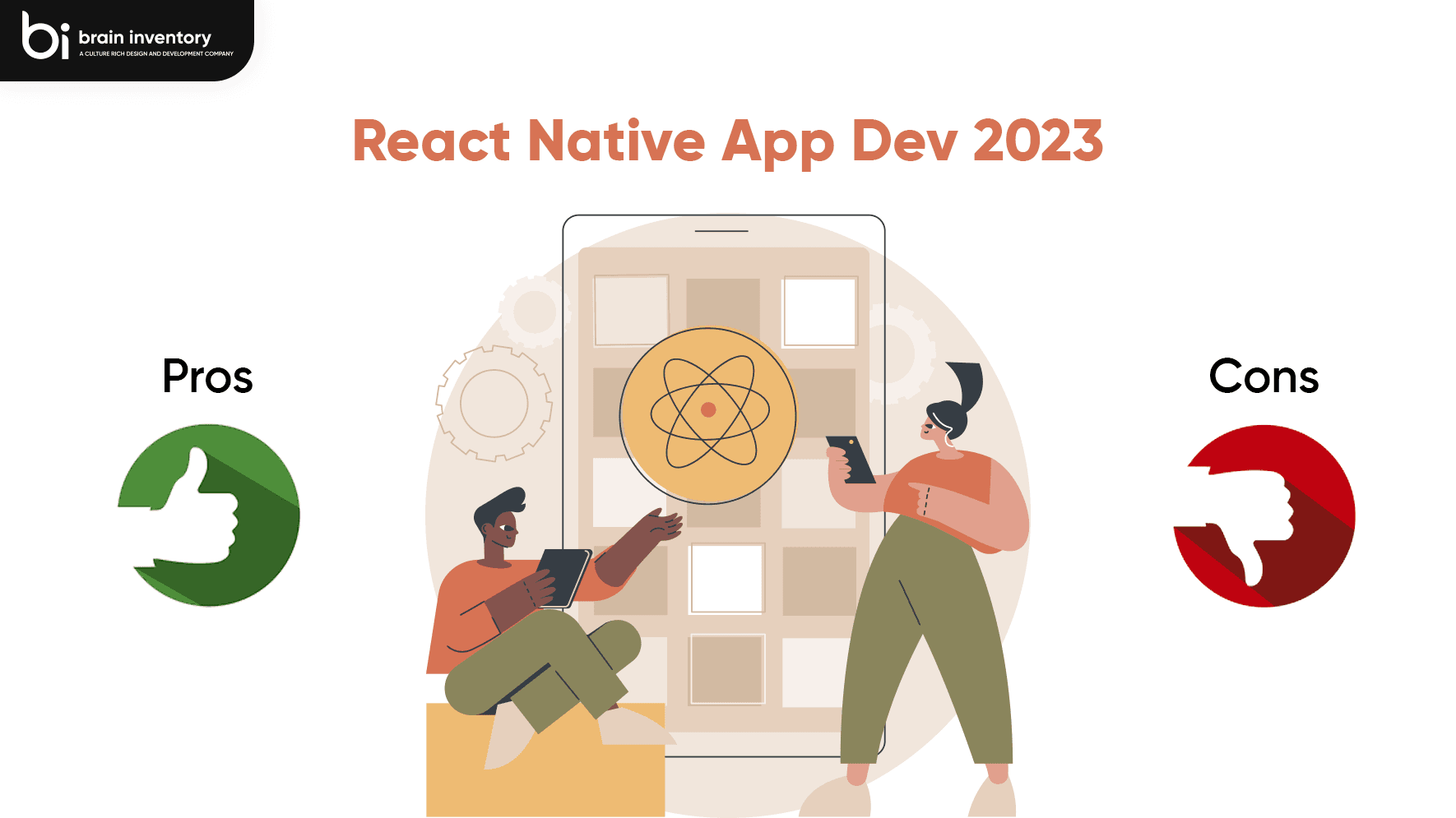React Native App Dev: 2023 Pros and Cons

Quick Summary: While many frameworks can help us with cross-platform app development, React Native is arguably one of the most promising and beneficial ones. The framework was developed by Facebook, which also extensively employs it in its mobile applications. Furthermore, their data shows developers without previous experience with the framework picked it as the third most-wanted-to-learn technology. With companies such as Microsoft or Shopify building their apps with React Native, it has proven itself to be a reliable choice for businesses across various industries.
What is React Native?
React Native is an open-source framework developed by Facebook that allows developers to build mobile applications using JavaScript and React. It enables developers to create cross-platform apps for iOS and Android using a single codebase, which means that much of the code can be shared between the two platforms. React Native uses native components to render UI elements, resulting in a more native-like performance and user experience.
One of the key advantages of React Native is its ability to speed up the development process and reduce the need for maintaining separate codebases for iOS and Android. It allows developers to write code once and deploy it on multiple platforms, saving time and resources. Additionally, React Native’s “hot reloading” feature allows developers to see changes in real-time without rebuilding the entire app.
However, like any technology, React Native also has its drawbacks. Since it relies on native components, some advanced or platform-specific features might require native coding. This could lead to performance issues if not handled properly. Additionally, React Native’s ecosystem and available libraries might not cover all the functionalities that a specific app requires.
React Native advantages and disadvantages list
Accelerated development: React Native enables developers to build mobile apps for iOS and Android using the same primary codebase. This approach allows for shorter start-up times and reduces costs by removing the need to hire separate teams of developers to build apps for different platforms. We compared writing an app for Android in React Native with creating a similar app in Swift. Here’s what we found.
Faster to learn for React developers: React, “learn once, write anywhere.” This increasingly popular Javascript framework was created by Facebook to make it easier for developers to build scalable front-end applications. Its unique paradigm of rendering updates in the browser regardless of whether the user interacts with the app or not, makes it worth checking out if you aren’t already doing so.
Quick fixes: Over-the-air (OTA) updates have been around for quite some time now, feeding through the main benefits of automated app delivery. The reach of automation is expanded through a combination of agile development and the use of cutting-edge solutions such as React Native. On top of that, apps can be updated in real-time, right from a mobile device with a WiFi or 3G connection. This way, you would be able to smooth out the process of delivering and rolling out updates on the fly. Unlike native apps, however, OTA updates are implemented solely via Javascript bundles. While this is perfectly fine for minor changes or quick fixes, it is uniformly impossible to replace huge chunks of code without leaving your app unapproved by multiple digital platforms (e.g.: App Store or Google Play).
One framework, multiple platforms: React for Native Apps is a solution that lets you develop universal mobile applications with convenient development tools. It’s React in its simplest form, yet available for iOS and Android. What’s more, such apps are usually indistinguishable from native apps built on Objective-C or Java. This means that the same devs can work on them, using the same technologies and skills.
Fast refresh: This feature is quite new for web apps. It was first introduced in AngularJS and has later been added to React, Vue, and other modern frameworks. It allows writing and modifying components faster due to the fact that changes in the code are immediately rendered without reloading the whole app. This makes building new features or fixing bugs more efficient and optimizes developers’ workflow.
React Native cons
Compatibility and debugging issues: Even though key players such as Microsoft or MetaLab have been using React Native for quite some time, the framework is still in beta. It hasn’t reached the 1.0 version yet, which means that developers might come across various issues with package compatibility or debugging tools. Besides, due to a large number of community packages, there is a risk that some packages you might be interested in are no longer maintained or compatible with your project.
Upgrading issues: Every now and then, a new version of React Native comes out. It’s quite tempting to simply wait for the update to roll out automatically so you can update your app without any additional effort. But the truth is that there might be some issues with an automatic update, and you should understand the implications of making that choice. To protect yourself from breaking your mobile app when a new RN upgrade comes out, or if you are planning to manually update it, I recommend using a few helpful tools and community-made guides.
Version Updates: While updating React Native to newer versions is important to access new features and bug fixes, it can sometimes introduce compatibility issues with existing code or third-party libraries.
Learning Curve: Developers familiar with React might find it easier to transition to React Native, but those new to React might have a learning curve. Additionally, understanding native components and bridging concepts can add complexity.
Conclusion
Businesses are embracing the idea of mobile-first strategies as the Web grows and changes. In particular, React Native apps are becoming increasingly popular among companies focused on innovation. After all, React Native offers several advantages. For example, it has a high code reuse rate, and its component recycling capabilities speed up app development and reduce costs. React Native is also very efficient when it comes to reducing the need for separate teams, as it can be deployed on both Android and iOS platforms with a single codebase.
These factors result in fast time-to-market, allowing for product iteration and market validation in record time. With a community of developers backing it up, React Native presents a compelling solution for businesses looking to stay ahead of the competition. Are you looking to take your business to a new level? Are you under any doubts about your App’s performance? Then, make sure you find the best React Native developers in the industry. Brain Inventory is one of the most superior solutions available for React Native app development in the USA, UK, Jordan, and Canada.

Have an idea?
Get in touch, we’d be
happy to hear from you
We are always looking out for new collaborations, whether you are a client who is passionate about a project or a talent who is interested in joining our team, our doors are always open.
locate us

India (HQ)
618, Shekhar Central, Palasia Square, A.B Road, Indore, Madhya Pradesh, 452001
+918109561401

United Kingdom
Brain Inventory, SBVS, 8 Roundhay Road, Leeds, UK, LS7 1AB
+18008209286

Canada
44 Main Street East Milton, ONCanada L9T 1N3
+4166696505

Jordan
185 Wasfi Al-Tal Street, Ammon Oasis Complex P.O Box 4724 Amman 11953 Jordan
+960770781000

USA
720 Seneca St Ste 107 Seattle, USA 98101
+1(206)6533419
if it's digital,we'll make it.
- Numetric - Online Accounting Software similar to QuickBooks
- Bloomia - Kegel exercise
- Virifi - Blockchain Powered Document Certification & Signing Platform
- Revolution Travel CRM - Custom CRM Built for Travel Agents
- Fatoura - Online Invoicing Platform
- My Fit Mantra - Your health partner
- Ocureel - Relation Building and video sharing Application